Some resources are much better than others for teaching the fundamentals and more advanced concepts too. Some may choose to forego a traditional learning institution though. It begs the question of whether you can really do it on your own.
It’s possible to learn music theory on your own with books, videos, online courses, and free YouTube videos, but it’s best to get the help of an instructor or by taking online courses. With so many options, you can start right now and be fluent in basic music theory in 6-months to a year.
How To Learn Music Theory On Your Own – The Resources
1) Free Websites
Light Notes

Light Notes’ introduction to music theory is really great because it’s beautiful, colorful, and interactive which makes the beginning of your education a little less dry. You might eye-roll at this description but a lot of people find theory quite boring (although I don’t really, considering its usefulness).
The primary reason I recommend starting with Light Notes though is that they walk you through, step-by-step, the very start of learning music theory which begins with the definition of sound.
Moreover, they guide you through the rest of their course material in a structured way. After that, you can head over to the next resource on my list and start going through their lessons.
Its worth mentioning that you can also go through Light Notes’ paid premium course which takes you through the next level, but I can’t recommend it because I’ve never actually gone through it.
The Music Theory Website
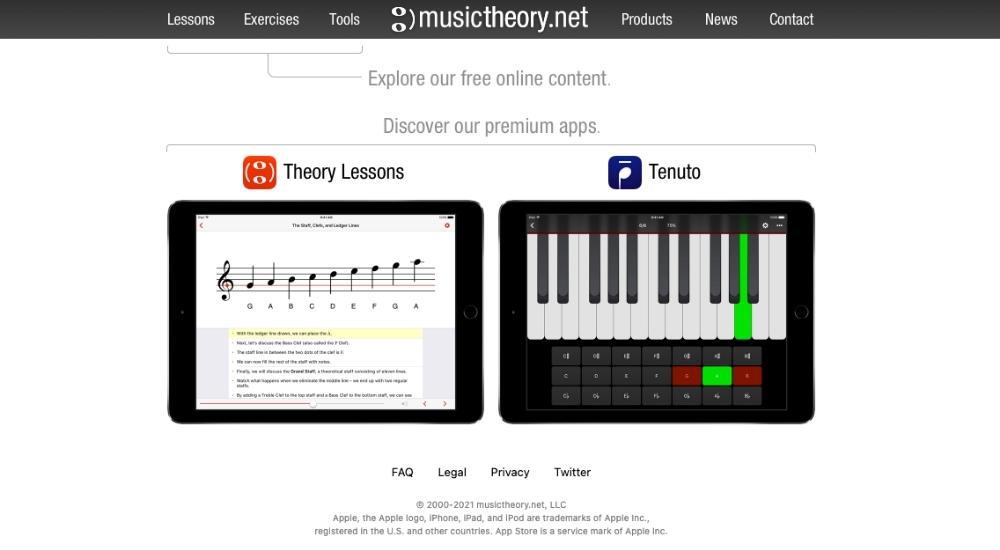
I’ve read elsewhere before that the Music Theory website is one of the oldest ones on the web. The site’s staying power makes total sense to me because I think of it as the holy grail of learning theory online – and with no catch and no cost.
It has definitely come in handy for me over the years, as it offers many lessons (at this link), exercises, tools, and interactive products to help you learn the fundamentals of music theory.
The lessons are designed to be straightforward, easy to understand, and they’re broken down step-by-step to keep the concepts easy and constantly progressing.
You’ll learn the basic concepts of staffs, clefs, and ledger lines, all the way to Neapolitan chords, which are more advanced harmony concepts.
It will only take you a few minutes to read through each concept and apply them, which makes this website an easy one to learn from. My favorite part of the site, however, are the tools and exercises which can be found here.
![Interval Calculator - How to Learn Music Theory [The Definitive Guide]](https://producersociety.com/wp-content/uploads/2021/11/Interval-Calculator-How-to-Learn-Music-Theory-.jpg)
The calculators, tools, and exercises are all great ways to drill what you know or figure out what you don’t, and you can also download an app called Tenuto to use on mobile (for about $6.00), however, this is something I normally don’t bother with although I did buy it and it is pretty cool.
I mostly bought it out of respect for the people who made this site because they’ve made such a great resource for all of us that it just seems like the right thing to do. I don’t need to do exercises on my mobile device anymore but it could be very useful for you if you’re just starting out.
![Music Theory - How to Learn Music Theory [The Definitive Guide]](https://producersociety.com/wp-content/uploads/2021/11/Music-Theory-How-to-Learn-Music-Theory-The-Definitive-Guide--1.jpg)
The exercises are customizable and you can choose what kind of things you want to drill. App or no app though, the Music Theory site is great stuff. I love this website. We’ll talk more about the Music Theory site in the lesson plan down at the end.
Jazz Guitar

This is an excellent website for those aspiring to play and improvise on jazz guitar. While it isn’t that easy to learn Jazz concepts like quartal chords or the art of improvising, this website provides you with everything you need to learn some of the most important rudiments.
Thankfully, most lessons are explained concisely and with illustrations, so it’s easier and more fun to go through than it normally would be.
Their approach is all-encompassing, so the website has a place for beginners to start with an introduction to jazz chords (right here). If you are already familiar with basic jazz concepts, then you can start as an intermediate student on other lessons such as Drop 2 and 3 Chords, Major 6th and 7th chords, Dominant 7th chords, and so on.
The best thing about this website is what I think is the best part of Producer Society – the conciseness, illustrations, and the willingness to really explain a concept in detail. Not only that, but they also teach you staple Jazz songs like “The Girl From Ipanema”, “Autumn Leaves”, and “Fly Me To The Moon”.
It’s easier to learn this way because you can apply the theory you’ve learned to understand songs you’ve already heard before for positive reinforcement.
Another fantastic way to learn how to play jazz songs is by subscribing to Emanuel Hedberg’s Patreon page but this is only for guitar players. I’ve been a fan of his work on Instagram for years but I recently subscribed to his Patreon and I wished I would’ve done so much sooner.
2) YouTube
Rick Beato
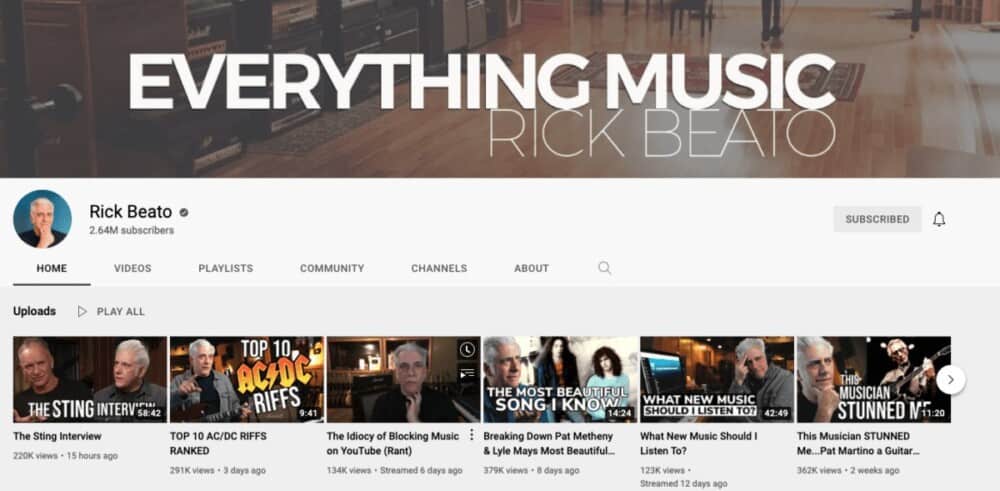
Rick Beato is a legend among players these days because of his YouTube channel that has probably helped millions of musicians at this point. He has almost 3 million subscribers and a very engaged audience, so he definitely has a way of teaching things that resonates with people.
Rick’s passion for music, theory, and musical analysis are obvious when you watch his lectures. A guy like Rick was made for YouTube because not only does he know everything about music.
But he’s also a fantastic teacher who loves what he does so it’s very easy to binge-watch his videos and learn a ton from them. I’ve learned more from watching Rick’s channel than I have from actual educational institutions.
This is great news for you because Beato’s channel has a lot of videos on music theory (not to be confused with musicology) but he has a lot more than that.
His videos explore things from the double harmonic major scale to how to program grooves. You can also purchase his theory book, The Beato Book, or his ear training course that he swears by.
Personally, I find his videos to be better than his book, but maybe that’s just me. The ear training course is one I intend on trying very soon too. That said, I bought the Beato book a couple of years ago now and it’s possible he has updated it since then.
Either way, the book doesn’t detract at all from Beato’s awesome YouTube videos. Here are some of my favorite as well as some that I think are useful for beginners (make sure to take a look at Beato’s music theory playlists – that’s where the magic is):
My Favorite Rick Beato Videos
What Every Pro Musician Needs to Know Part 1 and Part 2
Music Theory Lecture: The Elements Of Jazz Explained
Modal Mixture: Using Multiple Modes Over One Chord
*His series, “What Makes This Song Great,” is awesome too but it’s more like entertainment.
Great Beato Videos For Beginners
The Basics of Music Theory Part 1
Ear Training 101 – Mastering Intervals
What You Should Know About Chord Families And Their Modes
Music Theory Everyone Should Know
Music Theory For Producers And Everyone Else
Music Theory Masterclass 1: Drilling the Basics
Signals Music Studio
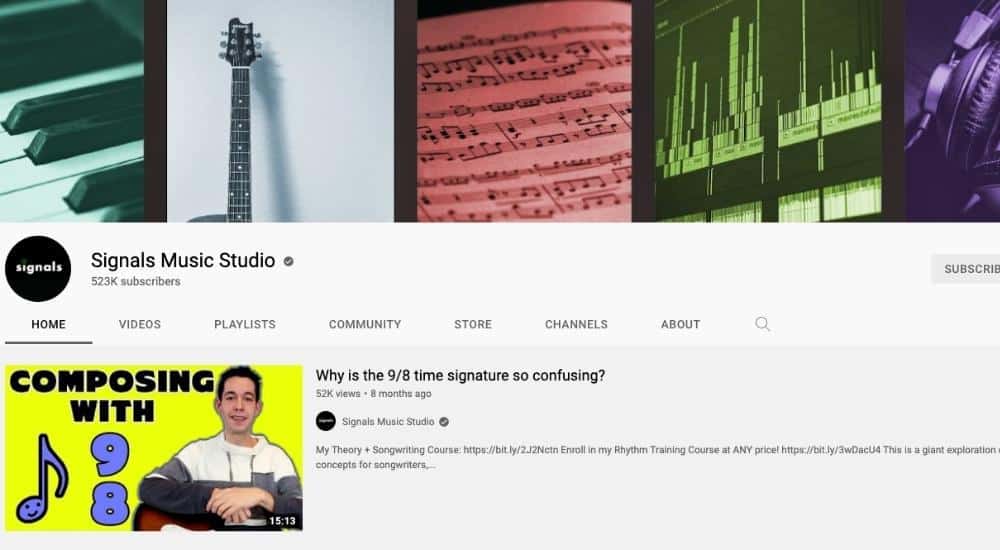
Another awesome channel is Signals Music Studio. Jake Lizzio explains concepts like inversions and slash chords all the way down to things like progressive metal.
If you’re wanting to write your own music using some of the concepts you’ll learn from the courses and books I’ve recommended, this is a great place to go along with my songwriting guide which includes a lot of progressions you could use.
What’s special about Jake’s teaching style is that he really knows how to explain things in a way where what you’re learning is applicable in an empirical way, rather than one bogged down by theory. One way of looking at it is that Jake’s channel is kind of like applied theory, rather than just the theory part.
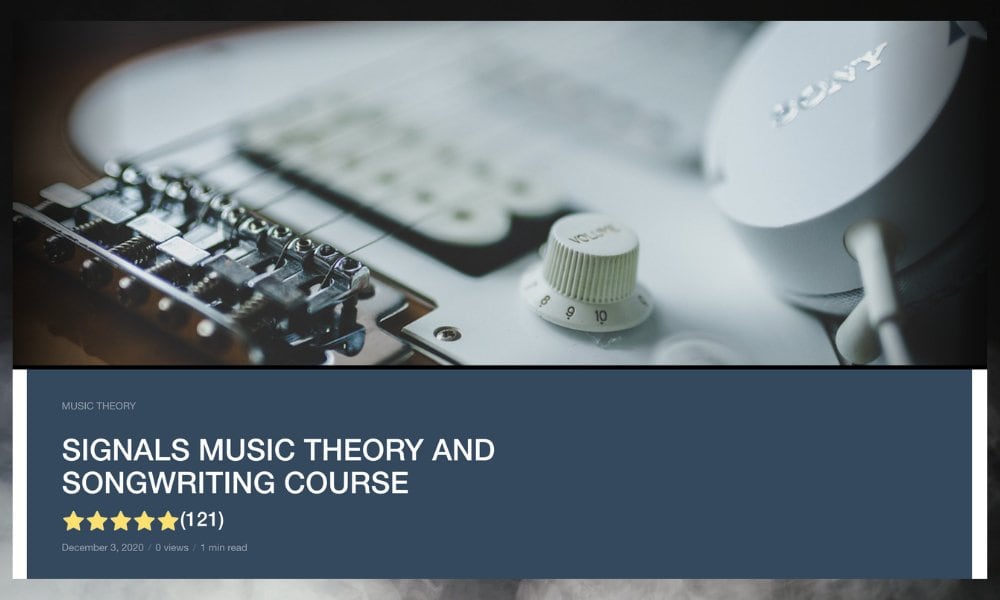
While Rick is more of a YouTube personality/teacher, I would say that Jake is a teacher first and a YouTube personality second which isn’t a detraction on either of their parts. It’s just a way of describing their approach to content creation.
You can start with his playlist, “Modes and Music Theory,” which should take a while to shuffle through. You’ll learn things like playing solos, pentatonic jams, augmented chords, and a blues guitar crash course.
There are a few jam tracks to play over (my guide on how to use those), which are helpful because they set up the screen where you can see the chord charts and follow along.
Another thing I want to say that is I found Lizzio’s explanation of scales and modes particularly helpful (I also have a guide here on the modes), particularly his videos on not only what they are, but how to use and apply them. Here is a list of my favorite videos from Jake as well as some good ones for beginners:
My Favorite Videos from Signals Music Studio
DORIAN SCALE – The 2nd mode of Major [MUSIC THEORY]
Demonstrating The Modes of Harmonic Minor [MUSIC THEORY / SCALES]
Learn the Lydian Scale- How to write, riff, and solo in the 4th mode
How to Improvise Solos in Mixolydian Mode [Guitar Lesson]
Using Modal Mixture for Dreamy and Epic Melodies/Leads [MUSIC THEORY]
Demonstrating All 7 Modes in Parallel [MODAL MUSIC THEORY]
PHRYGIAN – Understanding and Using the Third Mode of Major [MODAL MUSIC THEORY]
Some of the Best SMS Videos for Beginners
RELATIVE MODES – How C Major and A Minor are Same but Different [MODES – MUSIC THEORY]
How To Write Chord Progressions – Songwriting Basics [Music Theory- Diatonic Chords]
How to Write Chords and Songs in Minor [Songwriting Basics / Music Theory]
Jens Larsen
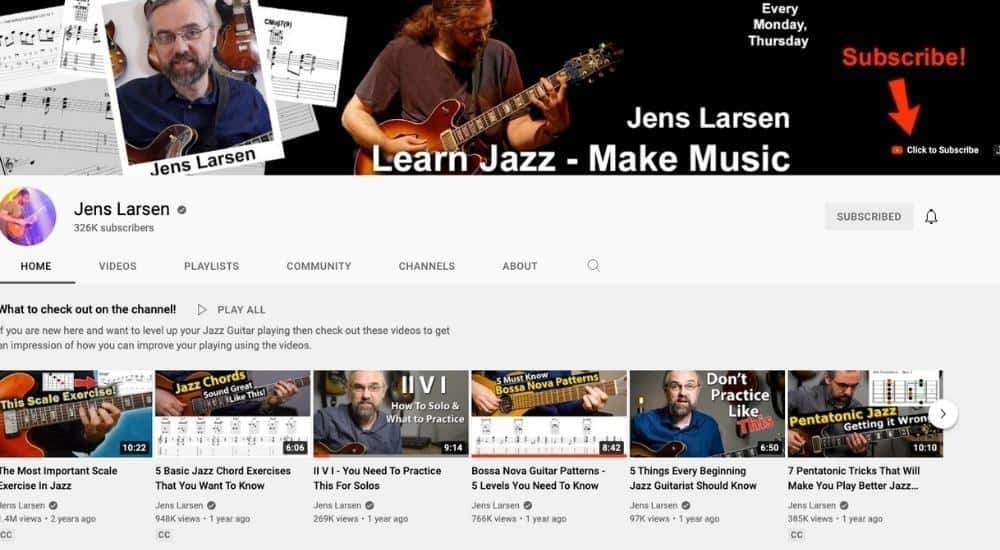
Jens Larsen’s channel is also another great place to learn some of the fundamentals of jazz guitar and music theory, although, I don’t think his channel is necessarily the most suited for beginners.
He does have some great videos on the basics of jazz and some other harmony concepts that are useful in other areas, ie, his video on functional harmony is pretty cool.
If you go through the videos I’ve listed down here, you’ll have a great idea of what Larsen has to offer and you should come away from it all a lot smarter too.
I’m not as deep into Larsen’s content as I am with Beato and Signals Music Studio, but I do watch his videos regularly as well, just not as much as the other two. The reason for that is that jazz and similarly “light” music is lower on the totem pole in terms of my favorite genres.
My Favorite Jens Larsen Videos
The Most Important Scale Exercise In Jazz
5 Basic Jazz Chord Exercises That You Want To Know
II V I – You Need To Practice This For Solos
5 Things Every Beginning Jazz Guitarist Should Know
Bossa Nova Guitar Patterns – 5 Levels You Need To Know
Some of the Best Jens Larsen Videos for Beginners
The Most Important Music Theory And How It Helps You Play Better
Triads – How To Use This Powerful Tool In Your Jazz Solos
7 Pentatonic Tricks That Will Make You Play Better Jazz Solos
Why You Want To Think in Functional Harmony
Ben Eller

Ben’s another popular guitar YouTuber and while his content is primarily dedicated to the guitar, he also has some comments on music theory concepts from a shredder’s perspective that I find useful and easy to understand.
Metal is my first love so I appreciate Ben’s channel, although, you may not have the same background as me. Still, it would be unjust for me to not mention this channel.
Shredders often have a different approach to music theory because their style is typically focused on technique and speed.
This takes some things like dynamics, harmony, and certain concepts off the table while emphasizing showmanship instead. Although, there are definitely many players who play beautifully and melodically while still being able to play fast.
But I digress, Ben will take you through musical ideas while teaching you iconic riffs from Metallica and Mastodon, to name a few.
I like his videos where he parodies popular artists because he points out some of the elements of the artist’s music that I don’t always notice, ie, Mastodon’s tendency to repeat melodic phrases at a higher octave as another section of the same song.
Unfortunately, Ben doesn’t organize his content into playlists very well, but I’ve listed some good ones for you to try out here.
Out of the four I’ve mentioned thus far, Ben is definitely the funniest among them because he’s got a good sense of humor and isn’t afraid to joke about things that maybe others would be (the recurring “Step-Dad” joke is one that never gets old IMO).
Some Of My Favorite Videos from Ben Eller
Your Alternate Picking Exercise SUCKS! This Is Why You Suck At Guitar 17
What if Metallica’s Kill em All album was all major key?
Great Ben Eller Videos For Beginners
Choose the Right Scale EVERY TIME!!
How to Turn CHORDS Into RIFFS!
The BEST Way To Learn and Practice Scales on Guitar!
What Is the Phrygian Dominant Scale? Phrygian Phun with Uncle Ben Eller
3) Online Courses
What I’ve mentioned thus far is actually not the meat of the learning because none of these channels teach you theory in a structured way. You may ask why I didn’t leave them until last then, and the reason for that is because they’re easy to get started with as they require no sign-up or commitment.
Now that you’ve got an idea of what’s out there for free though, we’ll get into the structured programs. The online course, programs, and the books are the main entrée, so to speak, so make sure you actually sign up for them if you’re serious about learning.
Music Theory Comprehensive Complete (Parts 1 to 6) from Jason Allen
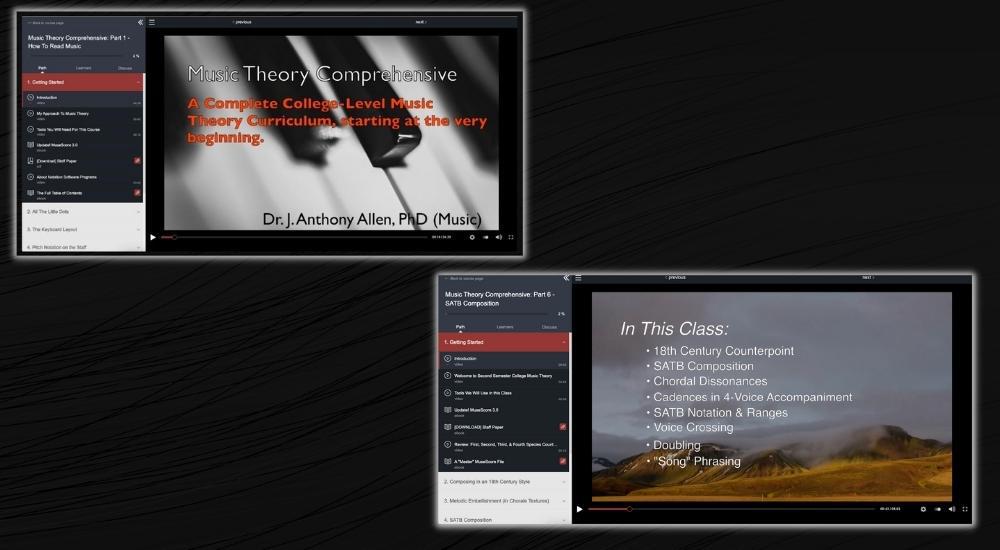
Once you’ve gone through Light Note’s introductory page and the lessons on Music Theory, you can turn your sights to the Music Theory Comprehensive Complete course on Punkademic which is really where the brunt of your structured learning is going to come from.
Once you’ve started this course, you’ll already be very familiar with the concepts he discusses and it’ll make going through it a breeze. Sign up for the All-Access Pass here and then start at Part 1 of the Complete Course until you get to the 6th part.
Some of the principles in this course are the same as the previous one I recommended, but if you’re anything like me, you won’t mind that because it’s a good way to drill the same principles that way you really learn them.
Nevertheless, this is the course that’s really going to hammer you with the fundamentals. It will lay the groundwork for you, that way when it comes time to start doing exercises with the books I’ll recommend in a moment, you won’t get lost at sea.
As I said, you want to make sure you go through both parts, 1-3 and 1-6 on Punkademic and you can revisit the videos anytime you want. There’s no sense in re-writing what it teaches here.
Just head over to the page and you can see for yourself because this is a fairly comprehensive course. And the best part about it is that it doesn’t cost that much money either.
If you enjoy the first two programs, you can go all the way to Part 21, although, all that’s really necessary is parts from 1-6 because the later programs appear to be more about composition and classical music.
4) Books
Mark Sarnecki’s Complete Elementary Music Rudiments (including the Answer Book)
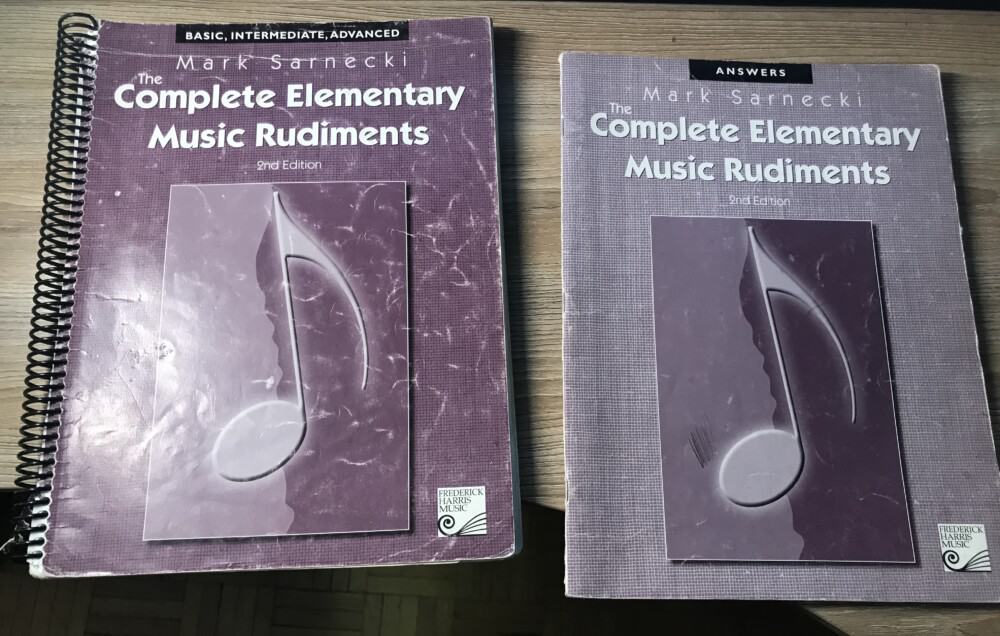
This book is divided into three categories, beginner, intermediate and advanced, to help you begin where you need to, although, you could just buy the Basic and Intermediate books to start.
I think it’s much better to just get the comprehensive book that includes everything.
It’ll teach the basic-to-advanced theoretical elements of music and how to apply them to any instrument.
I’ve failed to explain precisely how important this book was for me because I’m a bit tired right now, but if you’ve read other articles on my site, you know that I’ve recommended the main book and the answer book (from Amazon) many times before, and it’s because I credit a lot of my learning to them.
It’s also how I passed The Royal Conservatory exam:

These are the books you should get (along with a pencil and eraser) after you’ve gone through Jason’s comprehensive course on Punkademic. I’ve actually gone through M. Sarnecki’s book more than once because that’s how I prepared for the exam. You can see how mangled and used-looking my book is.
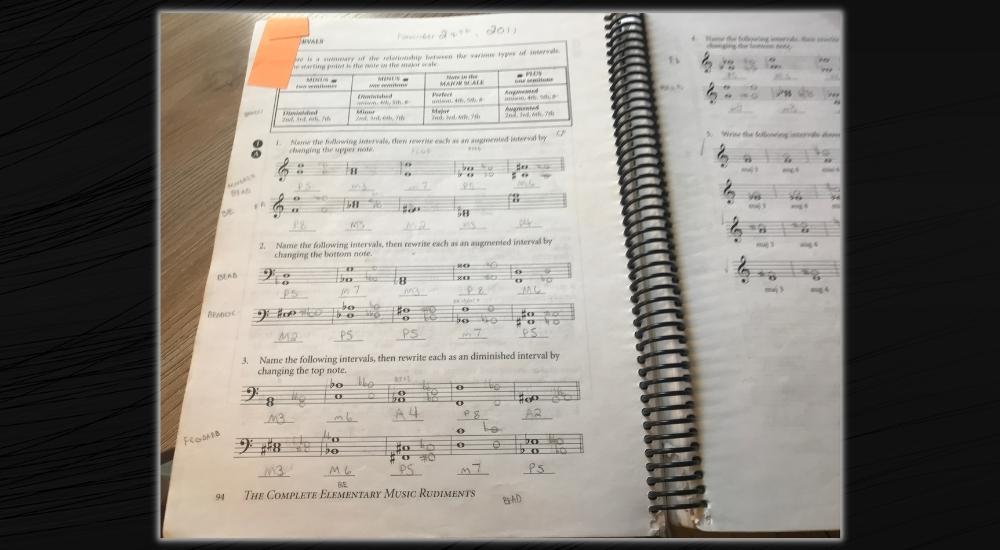
While Jason has his own exercises, I like the ones in Mark Sarnecki’s book, and I think you should go through these ones as well. Ideally, you should go through both. After you’ve done that and you’ve checked all of your answers, you can then move on to the next book.

The Musician’s Guide to Theory and Analysis from Jane Piper Clendinning
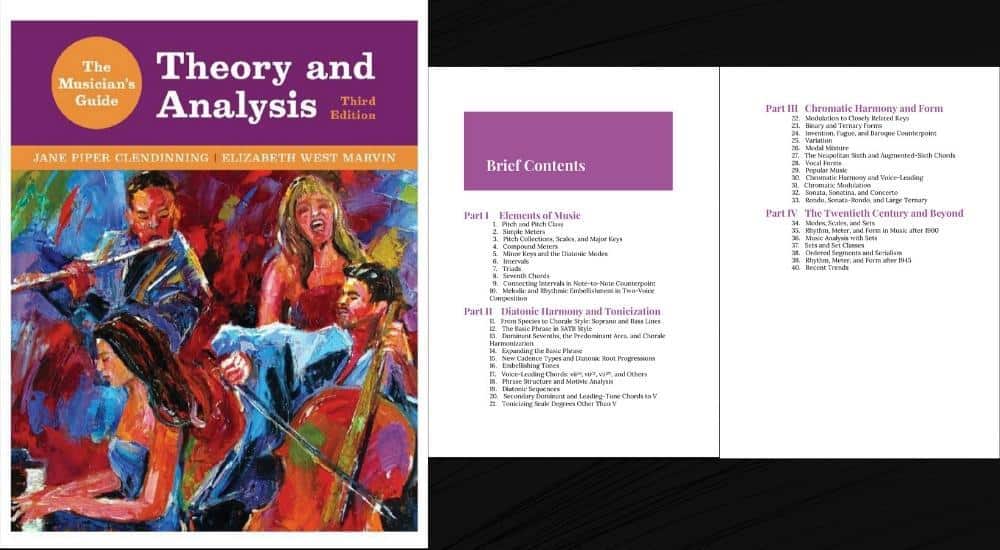
Jane Piper Clendinning is a professor of music at Florida State University. She has published many books on music cognition, theory, and analysis.
To get a college-level, thorough approach to theory, this is a great option and you can find it elsewhere, however, note that this book is in demand, big-time. Here’s the workbook which you should also get (from the same place).
With this book, you will have access to online resources as well, making this an excellent choice for anyone who wants a classroom approach.
When I went through this book, I remember screenshotting many useful principles and ideas but for some reason, I never took the time to write any of them down.
That means I’ll have to go through it again, but that’s ok.
When you’re going through the step-by-step guide to learning theory that I’m about to give you in a moment, you’ll be re-learning some of the same concepts twice (or even 3-4 times) because the material in the courses and books overlap at times. This will be good for your comprehension and memorization.
5) E-Books and Video Guides
PianoForAll

Piano For All (from their site) is an amazing way to learn how to play piano while learning some of the basics of theory at the same time. The concepts taught in Piano For All are all-encompassing for beginning musicians to learn and apply theory to the piano and other instruments too.
Like I stated in my article all about Piano For All, anyone can learn piano and music theory with this program because it is laid out for even the most rookie student. PianoForAll is also really good for learning how to read sheet music, although, there is no way of getting around the need to practice.
How to Learn Music Theory (A Step-By-Step Guide)
As I’ve explained so far, it is possible to learn music theory on your own using resources like free websites, Youtube channels, online courses, books, e-books, and video guides, however, following a structured program with an instructor is the best and quickest way to learn.
Learning music theory with a teacher through a structured program is also the easiest way to learn to theory, but for people who don’t have the means, you can use online resources, websites, and Youtube channels like the ones I just mentioned.
So, this section is for the people who want a structured approach to learning music theory using the resources that I’ve just explored. I’ve broken it down into a few sections that are ordered in a certain way for a reason and I’ve also included some supplemental learning too.
As I said earlier, the courses and books should be the majority of your learning, around 70-80%. The YouTube videos and online resources are just supplements to the main thing. The diagram below should give you an idea of how you should approach it.
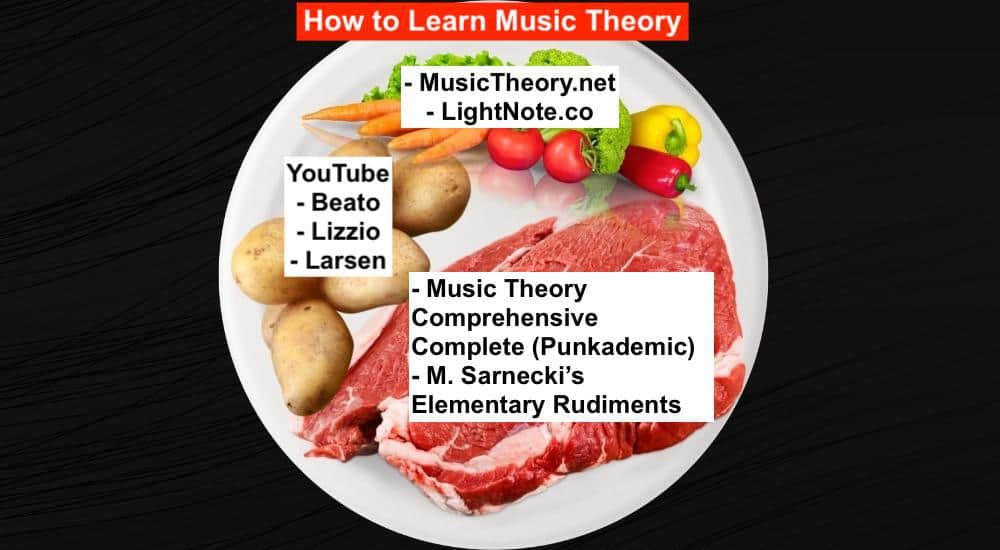
Really, this guide that I’ve compiled here is just the things that I’ve either used or they’re the things that I still use on a regular basis. I understand the basics fairly well, and if you go through these programs and books, you’ll be at a similar level.
The nice thing is that going through the main components here won’t even take that long. If you start today, in one year’s time you’ll have a firm grasp on the foundations of music theory – more than the foundation if we’re being accurate.
Step 1) Go Through Light Note’s Introductory Page
The first thing you want to do is start with Light Note’s introductory page. This is the best way to start because Light Notes starts at the absolute very beginning, which is the definition of sound.
Some of the other resources throw you into the water and just dive right into key signatures, sharps, and flats, but starting with the absolute beginning is a great way to warm up.
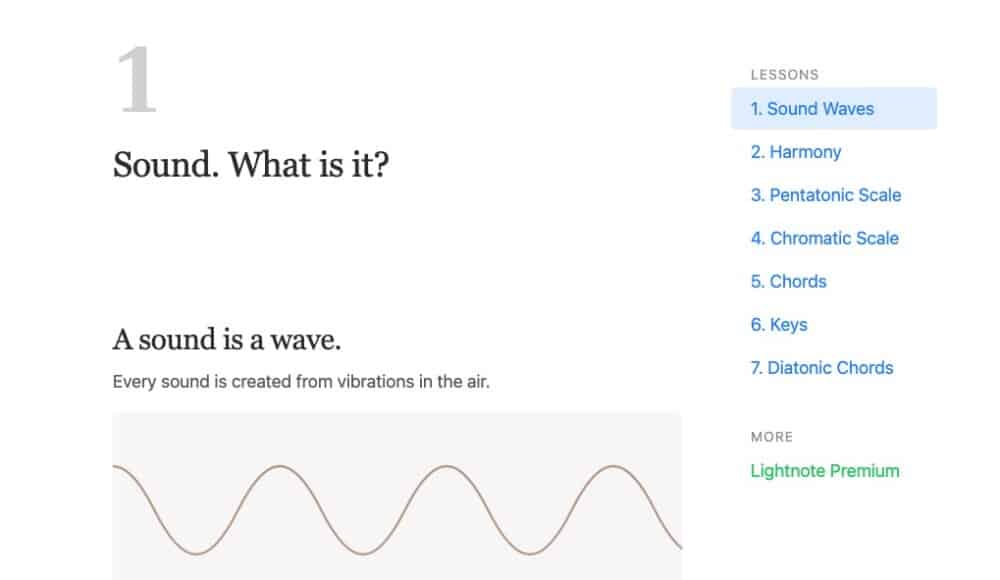
Go all way through Light Note’s page all the way down to the end which finishes at diatonic chords and the chords of the major scale. If you wanted, you can purchase their more in-depth course which is a great way to learn theory too.
But I prefer my method. Once you’ve gone all the way through Light Notes, go to the next site on the list.
Step 2) Go Through All Lessons on Musictheory.net
There are 39 lessons on the Music Theory website and each one needs to be completed in sequential order. Don’t skip any lessons and make sure you go through each one and take notes if you need to. What’s nice about this site other than what I’ve mentioned thus far is that it can be used for future reference whenever you need it.
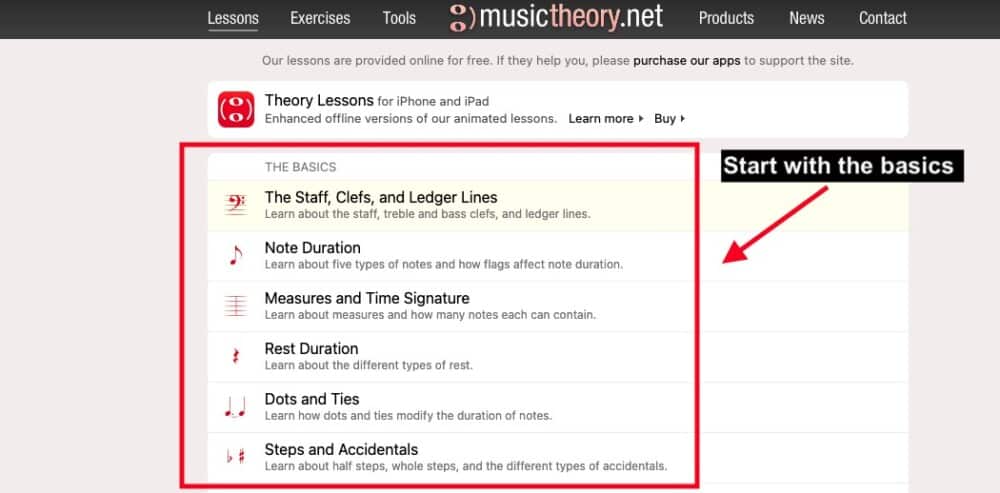
I’ve emphasized the importance of the Punkademic course but a lot can be learned from the MusicTheory site too. To use the site, you want to open up the lesson and then click on each section of the lesson one at a time. Some of them have sounds to go along with it and some of them don’t.
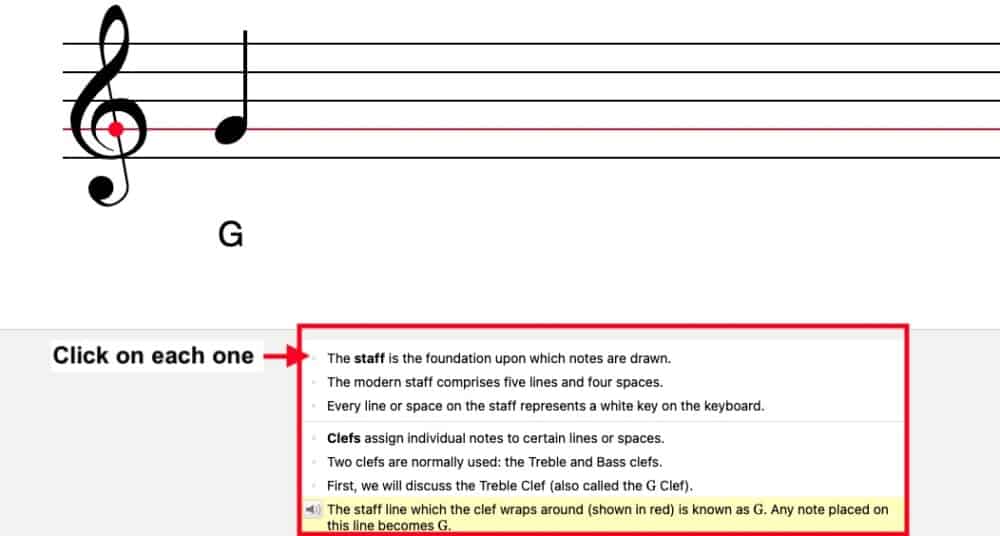
Step 3) Complete the Music Theory Comprehensive Complete (Parts 1 – 6) from Jason Allen
Allen’s Punkademic course is a good example of the opportunities now available as a result of the internet. It’s honestly pretty amazing how comprehensive this course is despite the price and it makes me wonder why – other than the obvious networking experience – anyone would attend a school where it’s $3,000 (on the low end) to enroll.

Either way, I’m not trying to be controversial, I just think this is a great course and the cheap price makes it almost unreal. Go through the entire thing, including parts 3-6, and then explore the additional resources as well.
Take as much time as you have to, but I would say that a 1-hour lecture per day is enough. Some things about the course you should know include the following:
- The audio is crystal clear
- The language is clear and concise
- There are captions in English and 9 other languages
- The teacher cares about the material
- It’s very well-organized and structured
One thing I want to mention is that Allen’s course doesn’t fall prey to some of the more annoying aspects of some online courses like bad audio, passionless teaching, bad communication skills, or the lack of captions. It checks off all of the boxes.
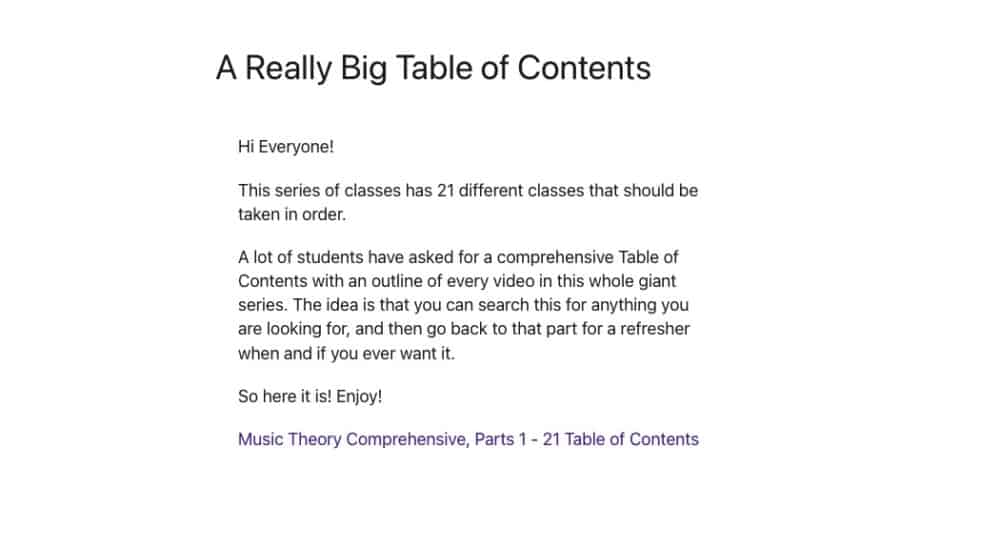
The final thing I’ll say about the program is that Allen has taken the time to organize the content in a very helpful, easy-to-use, way that brings a ton of structure and convenience to an already organized lesson plan. Follow the instructions and you’ll come away from it with a firm grasp on the things that matter most in music theory.
Step 4) Complete Mark Sarnecki’s Complete Elementary Rudiments
Once you’ve gone through the first three steps of the program, completing M. Sarnecki’s Complete Rudiments should feel fairly straightforward.
Like I said in the video above, the book is organized very well, there’s a complete answer key to check all of your answers, and it covers pretty much everything you need to know. If you’re like me, you may even enjoy studying it. I know I did.
Supplemental Learning (What To Do On the Side)
A) YouTube
The YouTube videos are just the content that you should be watching for fun in your spare time. Pretty regularly I’ll have Rick Beato videos on in the background while I practice the guitar and I find his content pretty inspiring and helpful.
It’s not uncommon at all for me to stop what I’m doing and then start messing around with a concept that Rick is currently talking about, and I do the same thing with the other 3 guys, Lizzio, Larsen, and Ben Eller.
What I’m trying to say to you is this: don’t worry about devoting your time and attention to these videos 100% if you don’t want to.
It’s perfectly fine to have them in the background while you’re performing some other task. I’m not going to list the same videos again down here, so what I’ll do is I’ll add some jump links to the channel names and it’ll take you to the list of videos.
B) JamPlay/Guitar Tricks for Guitar Players and PianoForAll for Piano Players
![JamTracks - How to Learn Music Theory - [The Definitive Guide]](https://producersociety.com/wp-content/uploads/2021/11/JamTracks-How-to-Learn-Music-Theory-The-Definitive-Guide.jpg)
Once you’ve understood the basics of theory, including key signatures, major and minor scales, and how to find a song’s key, you should be ready to start jamming along with backing tracks. Some of them have the key written right on them while others you have to figure out.
One thing I like to do is play along to a Spotify playlist like Rap Caviar or something similar. I’ll figure out the key, write down the chords of the corresponding major/ minor scale (if you’re feeling extra ambitious), and then I’ll start messing around with it. There’s no reason you can’t do a similar thing.
The point of this is to start applying the things that you’ve learned in an empirical way. It doesn’t necessarily have to be jamming along to backing tracks.
It could also be identifying the key of a song and its chords and then coming up with your own interpretation of the same progression. Analyzing songs like the way Beato does is a good way to learn too.
C) Complete The Musician’s Guide to Theory & Analysis (with the Answer Book) – [Optional]
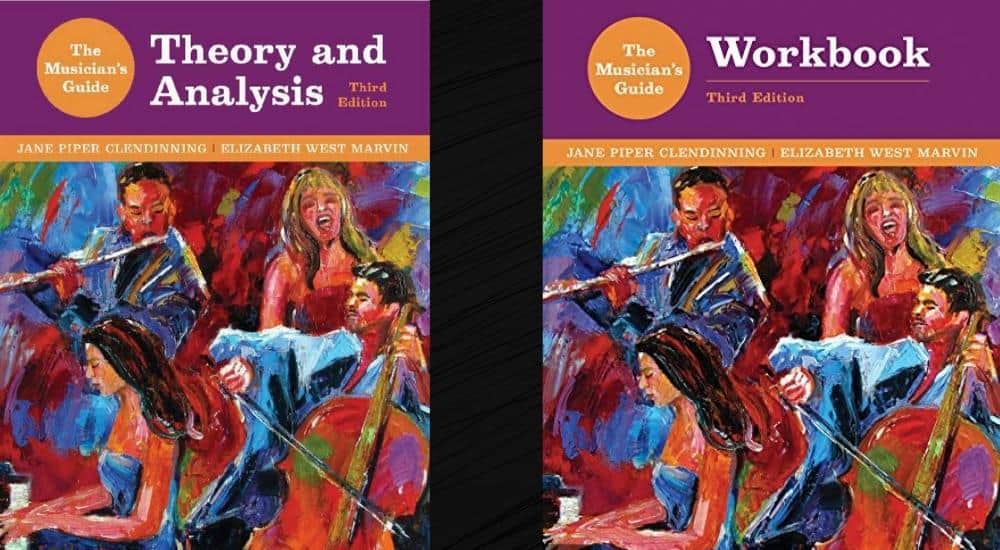
Like I said earlier, The Musician’s Guide to Theory and Analysis (on my Page) is probably one of the most sought-after textbooks on music theory there is, and the reason for that is clear to me after having gone through it twice: it’s good.
That said, this book is more advanced than Mark Sarnecki’s Complete Elementary Rudiments and also the Comprehensive Music Course from Jason Allen.
You could call it a day after having gone through the courses, books, and websites I listed earlier but if you want more, this is a great book for that.
How Long Will It Take To Learn Music Theory (Final Remarks)
If you go through the steps from 1-4, and then you’ve watched some of (but ideally) all of the YouTube videos that I’ve recommended to you, you’ll have a better handle on music theory than many other musicians.
While it might seem like a daunting task considering all of the content that has been laid out for you here, it really isn’t that bad.
You can learn the fundamentals of music theory and more in approximately one year if you study one hour per day and go through a structured program like Jason Allen’s Music Theory Comprehensive Complete in addition to M. Sarnecki’s Complete Elementary Rudiments.
Disclaimer:
That said, every person and their ability to learn concepts is different. It could take you longer or less time depending on your level of skill, listening and reading comprehension, previous exposure to music theory, or the time you take between lessons. This post is meant to point you in the right direction, not guarantee your success.
Important Things to Note About Learning Music Theory
1) Learning Music Theory Doesn’t Necessarily Make You A Great Musician
One thing that’s worth mentioning, however, is that all of this won’t necessarily make you a great musician, nor will it turn you into some kind of musical genius. Music theory is just an attempt to explain why some things work and why others don’t, and it’s a way for people to communicate abstract musical ideas.
That’s fairly similar to what Punkademic’s Jason Allen had to say when I reached out to him as well. You can see what he had to say down here:
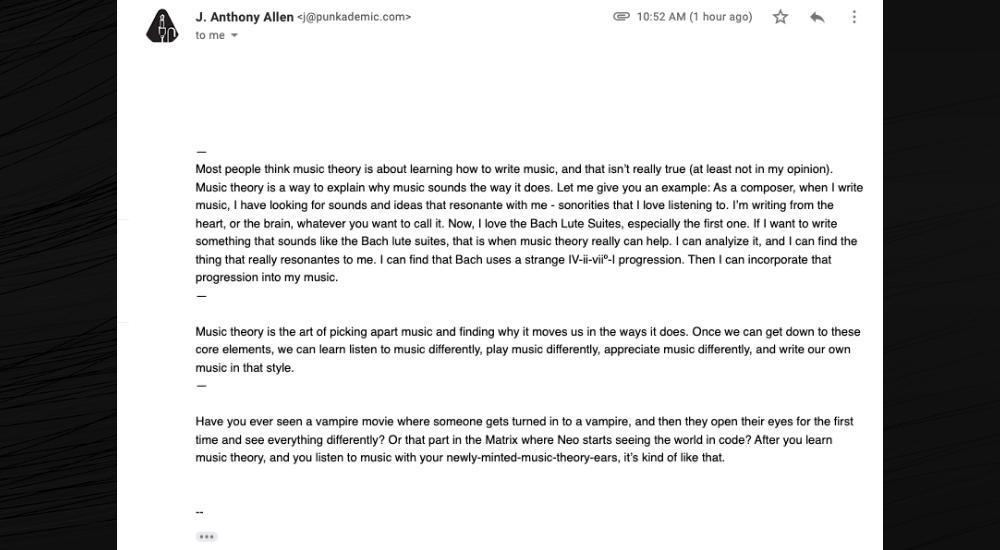
2) Reading Music Including Sight-Reading Is A Different Skill
Additionally, knowing music theory is a different skill from being able to read music and play it on your instrument, whatever that instrument may be. It’s a step in the right direction because you’ll learn the notes of the staff, key signatures, scales, etc, but it’s not the whole ball game.
Other Articles You May Be Interested In
- Is It Worth It To Learn Music Theory
- Is It Hard to Learn Music Theory?
- Why You Don’t Need Music Theory To Make Beats
Gear Mentioned
1) Mark Sarnecki’s Complete Elementary Rudiments and the Answer Book
2) J. Allen’s Music Theory Comprehensive Complete (on Punkademic)
– Get the All-Access Pass so you have access to everything
3) JamPlay
4) PianoForAll
5) The Musician’s Guide to Theory and Analysis and the Workbook


 Written By :
Written By : 